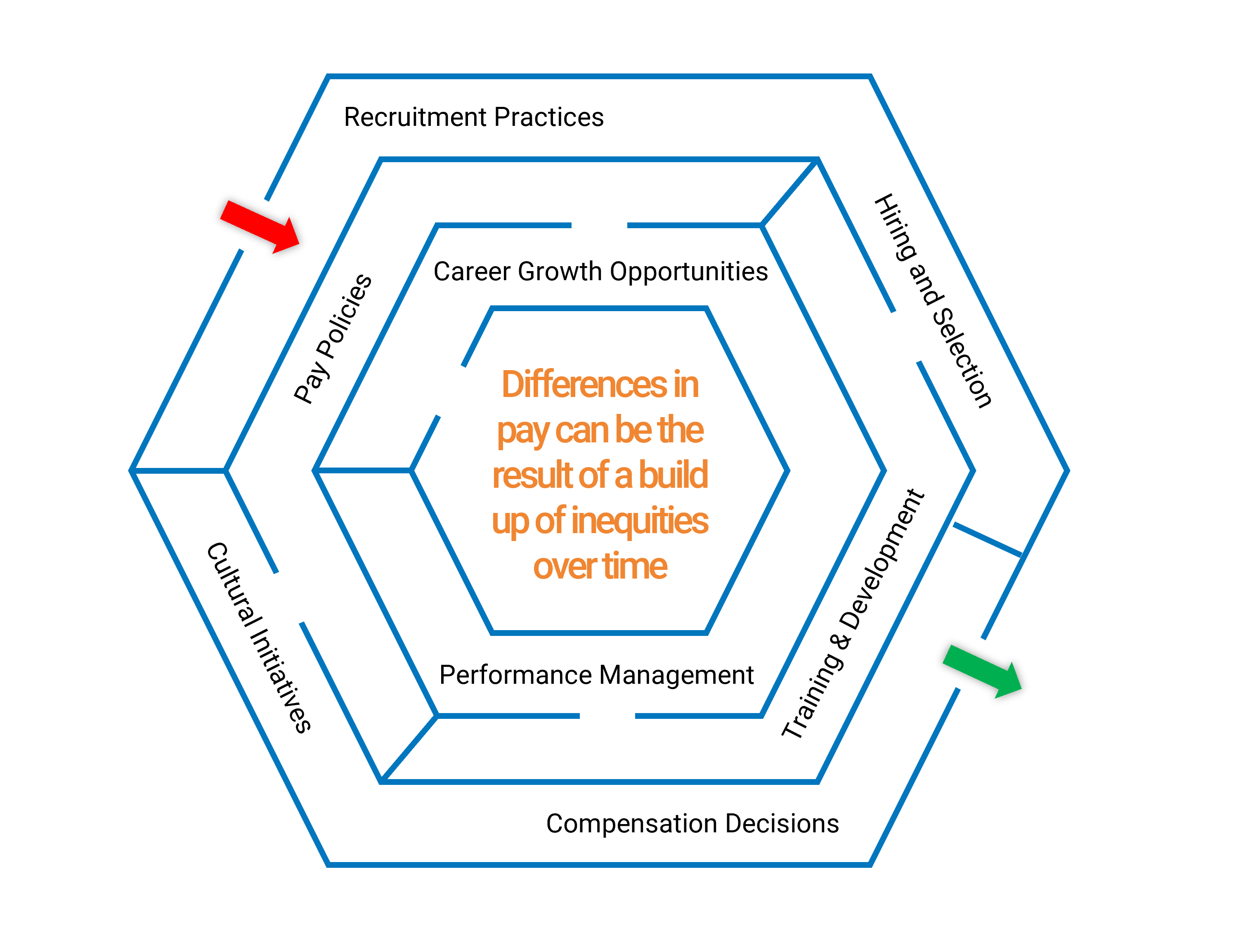As a fundamental element of inclusion and belonging initiatives, pay equity is an important prerequisite for fostering a fully engaged workforce.
Not only is pay equity a legal requirement, but also a widespread employee expectation. Pay equity studies provide organizations with the opportunity to build and sustain value-based workplaces where employees can thrive and advance regardless of their race, age, or gender.
At SullivanCotter, pay equity studies are a foundational component of our compensation advisory services. With an experienced team of statistical and industry specialists, we work with organizations to address a variety of objectives such as auditing for compliance or examining policies and practices to support a best-in-class pay program.
We are also uniquely positioned to address your executive pay equity needs.
Our Approach to Pay Equity
Our standard process involves a progressive research course of data collection and comprehensive analyses followed by written recommendations to aid in consensus-building and actionable next steps. Additionally, our statistical approach is thorough and exacting, utilizing innovative techniques to address unique issues related to complex datasets or smaller sample sizes.
Pay equity is not just a technical exercise but part of our commitment to helping clients build stronger organizations that are diverse, inclusive and fair.
SullivanCotter is dedicated to:
- Supporting diverse and equitable workplaces
- Leveraging a deep understanding of your organization
- Providing experienced consultants adept in quantitative analysis
- Being flexible, innovative problem-solvers
- Utilizing a collaborative approach to develop the right solutions
Who performs the analysis?
SullivanCotter has a team of experienced consultants, statisticians and data analysts dedicated to delivering the most comprehensive solutions for our clients.
What is the client’s role?
As a core member of the project team, clients will provide guidance and feedback throughout the process.
Who should be on the core project team?
SullivanCotter recommends that clients staff the core team with internal or external legal counsel, an executive responsible for the organization’s inclusion and belonging initiatives, and up to three other members specializing in human resources, compensation, research or other areas of focus.
How long will the project take?
Depending on the complexity of the project, the typical timeframe from data submission to conclusion runs anywhere from six to twelve weeks.
What will clients receive once the project is complete?
Clients receive reliable answers to their pay equity questions and a comprehensive report tailored to various audiences as needed. Our work generally culminates with presentations to key stakeholders and a comprehensive report.
Under whose organizational auspices are these studies performed?
Many organizations commission this work through their legal departments; however, these decisions partly are determined by the reasons for the project, the organizational culture, and how results will be communicated.
Need assistance assessing pay equity with your organization?
With years of industry experience and a deeply knowledgable team of compensation experts, SullivanCotter is uniquely positioned to address your pay equity needs.
Related Information
Learn how pay equity can help to build an organization that is diverse, inclusive and fair.
Related Resources
Pay Equity: More than an Annual Analysis
There are several statistical methods used to examine pay equity between select groups. However, all attempt to achieve the same ends of controlling for differences between groups when analyzing the compensation between those groups. Thus, if the groups are equivalent in all relevant respects, would they (e.g., men and women) be paid the same?
Pay Equity and Living Wage
Establishing a living wage is an essential component of supporting employee wellbeing, enhancing internal equity, and elevating the operational efficiencies of organizations.
Pay Equity Analysis: Gaining More Than You Think
Pay equity analysis offers a rare, in-depth look at the inner workings of organizational pay practices and how a host of tiny decisions may evolve into larger issues if they remain unrecognized and unmanaged.
